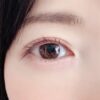近視の定義
Myopia, which is commonly defined as a spherical equivalent (SE) refraction of ≤ − 0.50 diopters (D), is the most common refractive error of the human eye in the modern world and has a significant impact on public health
近視は、一般的に球面等価(SE)屈折が≦-0.50ディオプター(D)と定義され、現代社会において人間の眼の屈折異常の中で最も多く、公衆衛生に大きな影響を与えるものです。
https://pubmed.ncbi.nlm.nih.gov/29681290/(PIIS0161642017320717)
近視があると発症しやすい病気
High myopia is associated with a higher risk of various ocular diseases, including retinal detachment, glaucoma, cataracts, and macular degeneration, that can lead to visual impairment or blindness
高度近視は、網膜剥離、緑内障、白内障、黄斑変性症など、視覚障害や失明につながるさまざまな眼疾患のリスクが高くなります。
https://pubmed.ncbi.nlm.nih.gov/16101943/
近視の有病率
The prevalence of myopia is generally high, particularly in Asian countries
近視の有病率は特にアジア諸国で一般的に高い。
https://pubmed.ncbi.nlm.nih.gov/15037570/
https://pubmed.ncbi.nlm.nih.gov/10764849/
https://pubmed.ncbi.nlm.nih.gov/23513059/
https://pubmed.ncbi.nlm.nih.gov/15078666/
https://pubmed.ncbi.nlm.nih.gov/24406412/
and has dramatically increased worldwide in the last several decades
ここ数十年で世界的に劇的に増加しています。2050年には近視は世界人口の約50%、強度近視は約10%(だいたい50億人、10億人)が罹患すると予測されている。
https://pubmed.ncbi.nlm.nih.gov/26875007/
屈折異常
屈折異常は生後の成長とともに変化する。
Refractive errors change with postnatal growth.
https://pubmed.ncbi.nlm.nih.gov/11709012/
新生児は一般に遠視であるが、小学校入学までに屈折異常は軽度の遠視、遠視、弱近視になるのが普通である。
Although neonates are generally hyperopic, refractive errors usually become low to mild hyperopic, emmetropic, or low myopic by the time children enter elementary school.
新生児の88%が+1.0D以上の遠視であり、近視は稀であることが示唆された。
The refraction at birth was estimated by extrapolation of the linear regression analysis results, implying that 88% of newborns have hyperopia of +1.0 D or greater and myopia is rare.
https://pubmed.ncbi.nlm.nih.gov/10615435/
https://pdfs.semanticscholar.org/5d0f/35a868b09343d2e506dd48a17fc2a2388caf.pdf
その後、近視の変化は進行し、近視の子どもは増加します。
Myopic changes then progress, with a decrease in the number of children with hyperopia and an increase in those with myopia.
https://pubmed.ncbi.nlm.nih.gov/10615435/
https://pubmed.ncbi.nlm.nih.gov/24100476/
Myopia progression becomes noticeable at ages 10–14 years and continues a mild course until it ceases shortly after age ~ 22–23 years
近視の進行は10~14歳で顕著になり、22~23歳頃まで軽度の経過をたどり、まもなく停止します。
https://pubmed.ncbi.nlm.nih.gov/4004615/
https://pubmed.ncbi.nlm.nih.gov/9021311/
According to the Beaver Dam Eye Study in a population of U.S. adults, prevalence rates of myopia and hyperopia are respectively 43.0% and 22.1% in those ages 43–45 years and 14.4% and 68.5 in those age ≥ 75 years.There was significant relationship between education level and refractive error (age adjusted r = -0.32, P = 0.0001).
米国の成人を対象としたBeaver Dam Eye Studyによると、近視と遠視の有病率は、43~45歳ではそれぞれ43.0%と22.1%、75歳以上では14.4%と68.5%である。また、同報告から教育水準と屈折異常の間には有意な関係があることが分かった。
https://pubmed.ncbi.nlm.nih.gov/8002254/
Similar trends have been reported in population-based studies with other U.S. and Australian adult community residents, including in the Framingham Eye Study.
同様の傾向は、Framingham Eye Study、Baltimore Eye Study Survey、Blue Mountains Eye Studyなど、米国やオーストラリアの成人地域住民を対象とした集団ベースの研究でも報告されており、いずれも成人では近視が多く、遠視は年齢とともに多くなることが示唆されています。
https://pubmed.ncbi.nlm.nih.gov/8600894/
https://pubmed.ncbi.nlm.nih.gov/9040465/
https://pubmed.ncbi.nlm.nih.gov/10366072/
The crude prevalence of myopia, high myopia, hyperopia, refractive astigmatism in the refraction, and anisometropia was 41.8% (95% confidence interval [CI], 40.0%-43.6%), 8.2% (95% CI, 7.2%-9.2%), 27.9% (95% CI, 26.3%-29.6%), 54.0% (95% CI, 52.1%-55.8%), and 15.1% (95% CI, 13.7%-16.4%), respectively. The prevalence of myopia decreased with age up to 70 to 79 years but increased slightly in patients 80 years and older; the prevalence of hyperopia showed the opposite trend. The prevalence of astigmatism and anisometropia was higher in the older age groups. No significant gender difference was found associated with the refractive status except for keratometric readings.
近視,強度近視,遠視,屈折性乱視,異方性の粗有病率は,それぞれ41.8%(95%信頼区間[CI], 40.0%-43.6%),8.2%(95% CI, 7.2%-9.2%),27.9%(95% CI, 26.3%-29.6%),54.0%(95% CI, 52.1%-55.8%) および 15.1%(95% CI, 13.7%-16.4 %)であった.近視の有病率は70~79歳までは年齢とともに減少したが、80歳以上ではわずかに増加した。遠視の有病率は逆の傾向を示した。乱視と異方性の有病率は高年齢層で高かった。角膜測定値を除いて、屈折状態に関連する有意な性差は認められなかった。
https://pubmed.ncbi.nlm.nih.gov/18243904/
年齢が10歳上昇すると、近視のリスクが低下した[男性:オッズ比(OR)=0.53、95%信頼区間(CI):0.44-0.62、女性。女性:OR = 0.65、95%CI:0.54-0.78]。男性では,近視は高学歴(高校:OR=1.6,95%CI:1.1-2.3;大学:OR=2.0,95%CI:1.3-3.1)および管理職(OR=1.6,95%CI:1.0-2.4)に有意な関連があった。女性では、高収入(OR = 1.5, 95% CI: 1.1-2.2)、および事務職(OR = 1.5, 95% CI: 1.0-2.4) と販売/サービス業(OR = 1.7, 95% CI: 1-2.6)も近視に関連していた。
A 10-year increase in age was associated with reduced risk of myopia [men: odds ratio (OR) = 0.53, 95% confidence interval (CI): 0.44-0.62; women: OR = 0.65, 95% CI: 0.54-0.78]. In men, myopia was significantly associated with higher education (high school: OR = 1.6, 95% CI: 1.1-2.3; college: OR = 2.0, 95% CI: 1.3-3.1) and management occupations (OR = 1.6, 95% CI: 1.0-2.4). For women, high income (OR = 1.5, 95% CI: 1.1-2.2), and clerical (OR = 1.5, 95% CI: 1.0-2.4) and sales/service occupations (OR = 1.7, 95% CI: 1.1-2.6) were also associated with myopia.
https://pubmed.ncbi.nlm.nih.gov/12586171/






